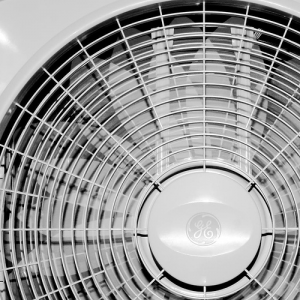 While some laptops are worse than others, anyone that uses a laptop knows they can heat up. One of the ways to fight overheating laptops is to use external laptop coolers.
While some laptops are worse than others, anyone that uses a laptop knows they can heat up. One of the ways to fight overheating laptops is to use external laptop coolers.
Because of how easy they are to manufacture, laptop coolers have flooded the market. As with all other mass manufactured items, laptop coolers come in all shapes and sizes and forms and qualities. While you may think that brand-new laptop cooler you picked up from Best Buy is helping you deal with your heating problems, that cooler may actually be hurting your laptop.
^ Image credit.
When it comes to laptops, laptops can be divided into basic two groups:
- Group one – Laptops that exhaust air out from the bottom.
- Group two – Laptops that pull air in from the bottom.
Coinciding with these two basic categorizations of laptops, there are two basic types of laptop coolers:
- Group A – Coolers that pull air away from the bottom of laptops.
- Group B – Coolers that push air towards the bottom of laptops.
Group one laptops should be used with group A coolers; group two laptops should be used with group B coolers. If you happen to use the wrong type of cooler for your laptop, the cooler is actually hurting your laptop instead of helping it because obviously it is interfering with the cooling mechanism built into the notebook.
So, how do you know what group your laptop belongs in? The easiest way to find out which group your laptop falls into is checking for exhaust vents on the sides (front, back, left and right) of the laptop. If you find an exhaust vent on a side of your laptop, chances are your laptop belongs in group two; you need group B coolers. If you do not find exhaust vents on a side of your laptop, chances are your laptop belongs in group one; you need group A coolers. Another way to test is to literally check the bottom of your laptop while it is running. Simply pick up the laptop while it is running and look for air vents. (Be sure to not have any discs inside disc drives when you check the bottom of your laptop because discs can get scratched if laptops are moved while they are inside.) Once you have identified the air vents (there is typically at least one big vent, with some laptops having other small ones, too), place your hand over it to feel if air is coming out. (Do not place your hand too close because you may burn yourself.) If air is coming out, your laptop is part of group one; if air isn’t coming out, your laptop is part of group two. If you just turned your laptop on from a sleeping state, you may have to use it a little bit to heat it up so the air vents are kicked into action; otherwise your laptop may be a group one but you may mistake it for a group two because the air vent is not being used at that moment. Once you have identified what type of laptop you have, you need to make sure you buy the proper type of cooler.
As already mentioned, group one’ers need group A coolers and group two’ers need group B coolers. However, how does one identify which group a cooler belongs in? Here are a few tips:
- Read the product description of laptop coolers. Although not all the time, many times a laptop cooler will indirectly tell you if it pulls air away, or pushes air towards, laptops. Look for keywords such as “dissipate heat” or “pull heat away”. “Dissipate heat” and “pull heat away” are different ways of saying “pull air away”; coolers that say such things belong in group A.
- Look at product pictures. Sometimes the the images of a product, either on the packaging or the manufacturer’s website, give you clues as to if air is being pulled away or pushed towards: Many laptop cooler pictures show air flows.
- Although there is no concrete proof, in my experience most of the cheap $10-ish coolers tend to pull air way as opposed to push air towards. In other words, I have noticed the cheaper coolers tend to be group A’ers. This, of course, isn’t always true and is only an observation I have made based on my experience.
- Again while I have no concrete proof of this, in my experience I have noticed the laptop coolers with fans of higher RPM tend to be group A’ers while the not-so-high RPM fan ones tend to be group B’ers. 1500 RPM is the magic number here, with 1500 RPM and lower typically being group B’ers and 1500 RPM and above being group A’ers. As with the previous point, this isn’t always true and is only an observation I have made based on my experience.
Ultimately, you may not be able to determine what type of cooler a particular laptop cooler is without purchasing it and finding out for yourself. (After purchasing a cooler it is very easy to find out what type of cooler it is; simply plug it in and feel if air is coming out of the top of the cooler or not. If air is coming out of the top, it is a group B. If air is not coming out of the top, it is a group A.) In this case you should make sure you are able to return the cooler if it turns out to be the wrong one or skip that cooler and move onto the next choice.
Good luck to everyone trying to keep their laptops cool. You are going to need it.
Feel free to share any laptop cooling or laptop cooler tips in the comments below.

 Email article
Email article



